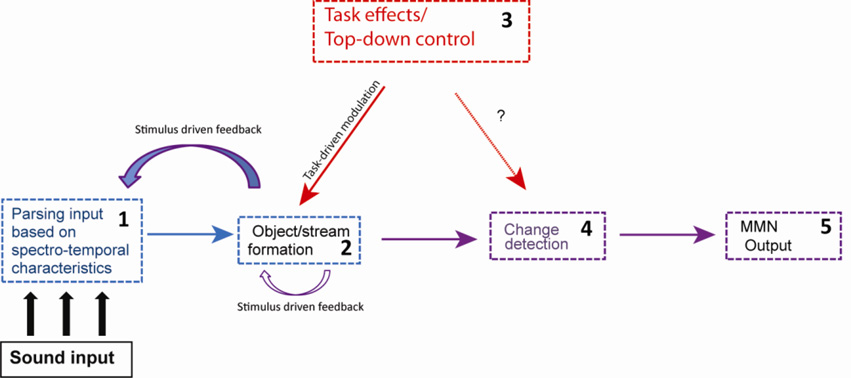Figure 4. Model of the MMN system.
A schematic diagram showing modulatory effects on MMN elicitation by stimulus-driven processes (blue) and task-specific goals (red). Arrows indicate a direction of influence. Input is analyzed from spectro-temporal characteristics (1), driving initial sound organization. Standard formation (2) occurs after stream segregation, and is subject to cross-stream interactions and task-driven goals. Stimulus-driven (2) and task-driven biases (3) modulate stream analysis and within-stream calculations. Change detection (4) is regulated by task-driven and stimulus-driven biases and their convergences. Competition between streams can be set up by task goals. A prediction of the model is that feature deviance detection (4) is a ‘higher-level’ process occurring on already formulated streams. MMN output (5) is the consequence of a series of processes and convergence of processes influencing change detection. Attention modulates MMN elicitation when behavioral goals influence how sounds are organized to perform a task (3, solid red line). Direct influence of attention on change detection is still unclear (3, dotted red line).

